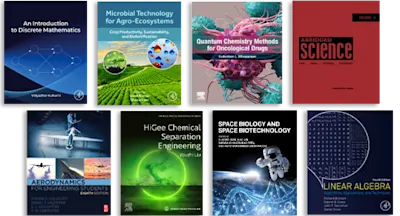
Photochemistry of Air Pollution
- 1st Edition - November 14, 2012
- Latest edition
- Author: Philip Leighton
- Language: English
Photochemistry of Air Pollution provides information pertinent to air pollution and atmospheric chemistry. This book discusses the photochemical reactions produced by sunlight may… Read more

Photochemistry of Air Pollution provides information pertinent to air pollution and atmospheric chemistry. This book discusses the photochemical reactions produced by sunlight may convert relatively harmless pollutants into substances that constitute a nuisance, create possible health hazard, and cause economic problem to humans. Organized into 10 chapters, this book starts with an overview of the problem of air pollution, particularly photochemical smog. This text then discusses the factors that collectively determine the amount and spectral distribution of the radiation entering a surface layer of the atmosphere. Other chapters compare the specific absorption rates of several absorbers that are present in the air during periods of photochemical smog, including oxygen, ozone, nitrogen dioxide, sulfur dioxide, ketones, peroxides, and particulate matter. The final chapter deals with the process of formation of the substances responsible for the physiological effects of eye irritation and plant damage. This book is a valuable resource for photochemists and air pollution scientists.
PrefaceChapter I. Introduction 1. Photochemical Smog 2. The Elementary Nature of Photochemical Reactions 3. Definition of the ProblemChapter II. Solar Radiation and Its Absorption 1. Factors to Be Considered 2. Solar Radiation Outside the Atmosphere 3. Air Mass and Solar Zenith Angle 4. Atmospheric Transmission 5. Molecular Scattering 6. Particulate Diffusion 7. Absorption by Atmospheric Ozone 8. Direct and Sky Radiation 9. Path Lengths of Solar Radiation in the Lower Atmosphere 10. Absorption Rates and Actinic Irradiance 11. Remarks on Absorption Coefficients 12. Diffusion Within the Polluted Layer 13. Surface Reflection 14. Clouds 15. DiscussionChapter III. Absorption Rates and Primary Photochemical Processes 1. General Considerations 2. Absorbing Species in Polluted Air 3. Oxygen 4. Ozone 5. Nitrogen Dioxide 6. Sulfur Dioxide 7. Nitric Acid and Alkyl Nitrates 8. Nitrous Acid, Alkyl Nitrites, and Nitro Compounds 9. Aldehydes and Ketones 10. Peroxides 11. Acyl and Peroxyacyl Nitrites and Nitrates 12. Reactions Following Absorption by Particulate Matter 13. Other Absorbers 14. SummaryChapter IV. The Kinetics of Photochemical Secondary Reactions in Air 1. Applicability of Laboratory Data 2. Rate Constants and Units 3. Extrapolation of Rate Constant Data 4. Frequency Factor and Collision Yields 5. Third Body Reactions 6. Stationary States 7. Estimates of Significance Based on Rate 8. Reactions to Be ConsideredChapter V. Reactions of Oxygen Atoms 1. The Production of Oxygen Atoms in Polluted Air 2. The Reaction of Oxygen Atoms with Molecular Oxygen 3. The Concentration of Oxygen Atoms in Polluted Air 4. The Reaction of Oxygen Atoms with Ozone 5. The Recombination of Oxygen Atoms 6. The Reaction of Oxygen Atoms with Molecular Nitrogen 7. The Reactions of Oxygen Atoms with Nitric Oxide and Nitrogen Dioxide 8. The Reactions of Oxygen Atoms with Hydrocarbons 9. Other Reactions of Oxygen Atoms 10. Summary of Oxygen Atom ReactionsChapter VI. Reactions of Ozone 1. The Thermal Decomposition of Ozone in Air 2. The Reaction of Ozone with Nitric Oxide 3. The Reaction of Ozone with Nitrogen Dioxide 4. The Reactions of Ozone with Olefin Hydrocarbons 5. Reactions of Ozone with Hydrocarbons Other than Olefins 6. Reactions of Ozone with Aldehydes and Ketones 7. Summary of Ozone ReactionsChapter VII. Reactions and Equilibria of the Oxides and Oxy Acids of Nitrogen 1. The Reaction of Nitric Oxide with Molecular Oxygen 2. Association Reactions 3. Reactions of Nitrogen Trioxide 4. Reactions Involving Water 5. Reactions Involving Hydrocarbons 6. Other Reactions 7. Summary of Reactions of Oxides and Oxy Acids of NitrogenChapter VIII. Free Radical Reactions 1. The Formation of Free Radicals in Polluted Air 2. Reactions of Alkyl Radicals 3. Reactions of Formyl and Acyl Radicals 4. Reactions of Peroxyalkyl Radicals 5. Reactions of Peroxyacyl and Acylate Radicals 6. Reactions of Alkoxyl Radicals 7. Reactions of Hydroxyl and Hydroperoxyl Radicals 8. Summary of Free Radical ReactionsChapter IX. Reactions of Sulfur Dioxide 1. The Photooxidation of Sulfur Dioxide in Air 2. The Photochemical Reaction of Sulfur Dioxide with Hydrocarbons 3. The Photolysis of Mixtures of Sulfur Dioxide, Nitric Oxide-Nitrogen Dioxide, and Hydrocarbons in Air 4. Sulfur Dioxide and Particulate FormationChapter X. General Discussion 1. The Photochemistry of Mixtures of Nitric Oxide or Nitrogen Dioxide with Hydrocarbons in Air 2. Concentration Changes Produced by Irradiation of Polluted Air 3. Eye Irritants and Phytotoxicants 4. SummaryReferencesSubject Index
- Edition: 1
- Latest edition
- Published: November 14, 2012
- Language: English
Read Photochemistry of Air Pollution on ScienceDirect